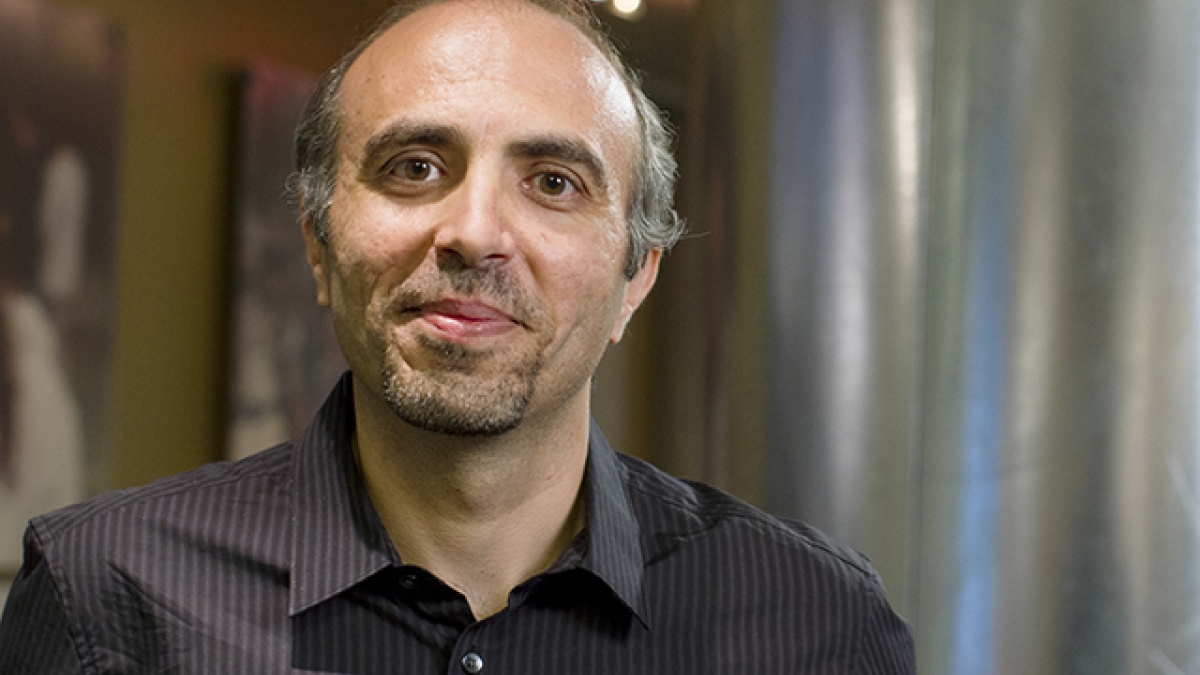ASU researchers set the stage for fact-based fight against Ebola

Three Arizona State University researchers are working to aid international efforts to stop the spread of the deadly Ebola disease.
The National Science Foundation (NSF) has given a grant to K. Selçuk Candan, Gerardo Chowell-Puente and Maria Luisa Sapino to develop computational tools to evaluate and analyze data on the Ebola epidemic.
Working with data on the mobility and social contact patterns of individuals in areas that have experienced outbreaks of the disease, they will seek to give health care professionals and policymakers reliable assessments of the potential impacts of employing various interventions and strategies to combat the outbreaks.
Candan is a professor of computer science and engineering in the School of Computing, Informatics, and Decision Systems Engineering, one of ASU’s Ira A. Fulton Schools of Engineering. Sapino, an adjunct faculty member in the same school and a professor at the University of Torino in Italy, specializes in data integration and analysis.
Chowell is a newly appointed Second Century Initiative associate professor in the School of Public Health at Georgia State University in Atlanta and adjunct faculty member in the Mathematical and Computational Modeling Sciences Center at ASU. His expertise is in mathematical epidemiology, infectious disease dynamics and disease modeling.
The NSF is providing them with a $120,000 Rapid Response Research (RAPID) grant for the project, titled “Understanding the Evolution Patterns of the Ebola Outbreak in West-Africa and Supporting Real-Time Decision Making and Hypothesis Testing Through Large Scale Simulations.”
The grant is a follow-up to a $500,000 NSF grant previously awarded to the research team for the project “Data Management for Real-Time Data Driven Epidemic Spread Simulations.”
Many models for predicting disease patterns exist. The models leverage demographic, mobility, social contact and intervention data to attempt to determine hotspots for future disease outbreaks.
“But the problem is that, for accurate decision-making, so many simulations, with different assumptions about the disease and future interventions, need to be executed that it is difficult for decision-makers to determine what data are significant and how to properly interpret all that data produced through simulations,” Candan explained.
Some factors generally incorporated into existing simulations aren’t applicable to Ebola. These models are designed for highly communicable diseases, such as influenza, and don’t consider Ebola-specific epidemiological characteristics, such as its transmission via bodily fluids from close contact with infected persons, Candan said.
“Our goal is not to create a new kind of simulator, but to enrich models for the spread of Ebola based on observations, and enable synthesis of the information produced by an ensemble of simulations into something that decision-makers can more easily understand. That way they can make better-informed decisions about how to confront Ebola,” he said.
The team’s work will build on Chowell’s recent work on epidemic modeling and computer simulations of Ebola to predict the size of the outbreak in Nigeria in West Africa.
“There is a critical need to devise mathematical modeling tools of the spread of the Ebola virus disease epidemic in West Africa,” Chowell said. “This will help us understand the spatial-temporal progression of the epidemic and guide the effects of control interventions, including the establishment of Ebola treatment centers, massive educational campaigns and improvements in infection control measures in health care settings.”
The team will work with contacts in Guinea, one of the areas of West Africa most affected by Ebola. They will provide data on local intervention methods and social contact patterns.
In addition, researchers at Columbia University will provide expertise to help the ASU team decide what social parameters to focus on in their research – including the reaction of a population to intervention measures being implemented, and whether social practices are permissive to the rapid growth of the epidemic.
“We want to help decision-makers decide how to best intervene and to better understand what consequences their decisions may have,” Candan said. “For example, how do policymakers decide whether or not to close schools out of fear that Ebola may spread? How do you decide whether to delay or cancel flights out of the same fear? We want these decisions to be grounded in evidence.”
The result of the project should extend beyond developing tools to bridge the information gap that could hinder effective action to halt Ebola. The same data analysis methods could be applied to producing more successful policy in areas of foreign affairs, economics and education.
Written by Chanapa Tantibanchachai and Joe Kullman

